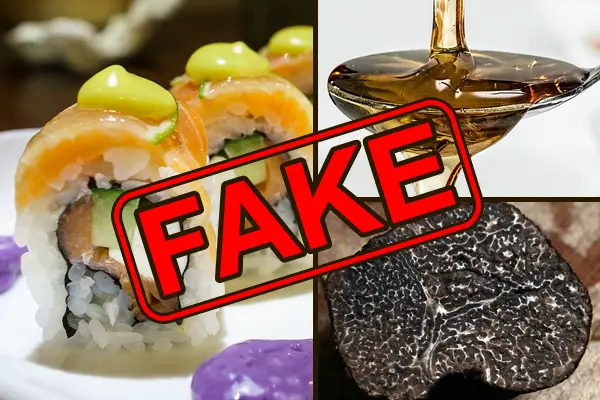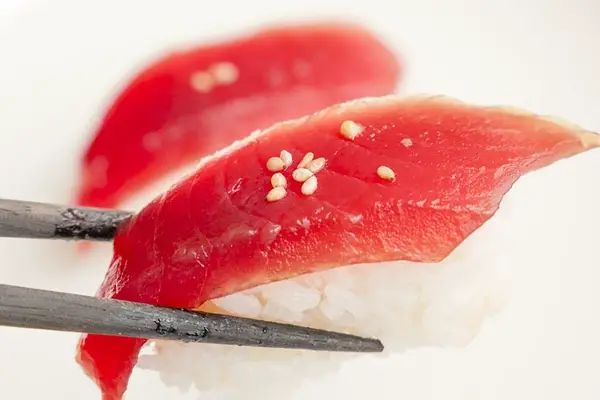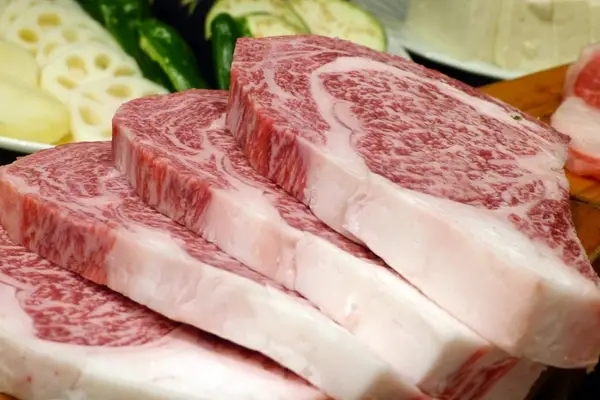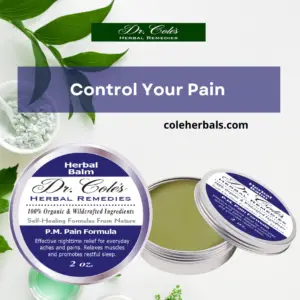
One of the privileges of living in the 21st century is the ability to find quality food items and even import foreign food that would otherwise be inaccessible. Unfortunately, there is a price to pay with this system as many take advantage of the customers’ growing demands.
Food fraud is a $50 billion annual industry, which continues to grow each year and affects many consumers. Whether you are a health enthusiast that is being tricked into buying fake honey or olive oil, or a foodie paying top dollar for imitation lobster or truffle oil, food fraud affects most of us at some point.
To navigate through the food system and avoid getting fooled, award-winning writer Larry Olmsted carried out his own investigation to find out exactly what are we eating in Real Food/Fake Food: Why You Don’t Know What You’re Eating and What You Can Do About It.
From grocery stores and market to restaurant and coffee shops, here is the list of top twelve foods that are most commonly found to be fake.
Olive Oil
Olive oil has many health benefits; it is anti-inflammatory, and helps prevents strokes and heart disease. It is wonderful oil to use…if you find a real one. As Olmsted found out, olive oil is one of the most common fake foods in the U.S – 80-85% of it is fake.
“This is one of the most pervasive Fake Foods in America, reaching deep into home kitchens, restaurants, and supermarkets, and not unfamiliar to the government agencies supposedly watching over our food supply,” Olmsted writes.
Instead of pure olive oil, what you are commonly buying is peanut oil and even soybean oil – a likely GMO food.
To find real olive oil, look for seals from quality assurance organizations, or better yet “know your farmer.”
The Extra Virgin Alliance, UNAPROL (an Italian olive grower’s association), and the North American Olive Oil Association which tests member samples and uses a red circular logo with a green olive branch, are useful seals of quality to look for on your product. The California Olive Oil Council and the International Olive Council also certify their products according as noted in this article.
Honey
What many people do not realize is that there no real standards to what can be called “honey” when sold in little glass jars. As a result, many places sell honey diluted with sugar, sweeteners, high-fructose corn syrup, or even illegal antibiotics.
Thankfully most farmer’s markets include products from local beekeepers that are generally authentic. Do your best to know your source before buying, and ask plenty of questions if you’re skeptical.

Fish
There are many fish species in the world. And those who love fish know that many taste very different from one another. In restaurants however, you never know if you are going to get what you ordered. Fish served there and fish sold in stores is often mislabeled.
Red snapper, for example, is fake 94% of the time, as a DNA testing study showed. Sold as a red snapper is a much cheaper fish filet made of various other species. The same is true for many other types of fish. Tuna is also fake an estimated 94% of the time, especially when it is served at sushi restaurants. Instead of tuna, sushi bars often use escolar, a type of fish that often is responsible for giving people diarrhea.
Experts say that if you are buying or ordering an expensive fish, and it is never shown to you whole, you are very likely to be scammed.
Fruit Juice
When buying fruit juice – no matter what kind – you might end up drinking a lot of apple juice. Many companies add apple juice to cut any other fruit juices, because apples are cheaper.
But this scam does not stop there. Even though apples are inexpensive, Chinese-made apple concentrate is even cheaper, and that is what you are likely to be drinking.
Check your ingredients lists and buy from trusted companies, or make your own to avoid these scams.
Coffee
As common as coffee is, it is also often cut with cheaper materials in order for the seller to make more money on it. The hidden ingredients in it can be: twigs, corn, barley, and parchment. It gets worse when it comes to instant coffee. It can be mixed with chicory, cereals, caramel, parchment, start, malt, and figs, according to Olmsted.
If you want a guarantee that your coffee is 100% pure, it is best to get the beans and grind it yourself.
Tea
Who does not like a cup of fresh brewed tea? Unfortunately, to keep teas smelling fresh longer, instead of disclosing its natural shelf life, some companies are adding sawdust to make teas last longer.
Buy from trustworthy organic and local producers to minimize this risk whenever possible.
Parmigiano-Reggiano Cheese
Real parmesan cheese is often named the King of Cheeses for its taste. But here in the U.S., you are likely to get stuck with many of its fake doubles. According to a 2016 FDA study, almost 100% of this cheese in the U.S. is mixed with cheaper cheese or even wood pulp to lower the costs.
If you want to find a real one, be sure to look for the rare “Made in Italy” stamp on it.

Real Kobe beef goes for $150 per pound and higher. Think you are getting the real thing at a restaurant? Think again. PHOTO: Pixabay
Japan’s Kobe Beef
Kobe beef is one of the most treasured meats in the meat industry. It has originated in Japan and receives an A5 grade for its taste, but now can be also raised in Australia or Japan. This meat is extremely expensive as it requires many steps to achieve its texture. The cows raised for Kobe beef are treated close to royalty…up until they are slaughtered. They are given beer. They receive daily massages. And they are even played classical music.
If raised correctly Kobe beef is sold for $150 per pound and higher. Unfortunately, many places want to charge the same price without doing any work. As a result, Business Insider found that only eight restaurants in the U.S. sell authentic Kobe beef. All others are likely to be scamming their customers.
Spices
If you like to cook, you might have noticed that some cheap spices bought at supermarkets have no real smell or taste. Often, they smell like dried up weeds from outside. That is because they are often mixed with random ingredients. Turmeric is often mixed with corn; nutmeg – with pepper, and oregano with weeds.
Truffle Oil
Truffle oil is one of the recent food crazes, with restaurants serving French fries drizzled with “truffle oil,” and cafes are selling “truffle oil” popcorn. Sadly, none of the truffle oil dishes contain much if any truffle content. Truffles – real truffles – are extremely rare and expensive (real truffle oil can go for $90 per ounce).
What you buy as truffle oil is often a synthetic chemical combination that attempts replicates the taste. As Olmsted told USA Today:
“Most people have no idea what real truffles taste like — certainly not like plastic or gasoline.”
The most common ingredients used to make it are 2,4-dithiapentane mixed with olive oil, as well as bismethyl(dithio)methane (also known as 2,4-dithiapentane). This concoction makes the oil cheap but lacking any medicinal properties that real truffles have (truffles are great for heart health, circulation, blood sugar levels, and the immune system). Instead, fake truffle oil may have negative effect on health: 2,4-dithiapentane in high quantities carries risks for the central nervous system. While the fake truffle oil in question uses it in lower quantities, it is likely not worth the risk, and definitely not worth the high price it is being sold for.
Lobster
Lobster is expensive, which is why that Lobster dinner special from your favorite restaurant could well be a mixture of shrimp and crab. While there is nothing wrong with either, you are better off buying them cheaper than the fake lobster unless you can be confident in the source of your meal.
Champagne
Real champagne comes from the Champagne region of France, and there is a misconception that it is illegal to call any other sparkling drink champagne. That is false. At least half “champagne” bottles on the market are from California and other places. While there are not health risks, you are likely to be spending way more money than this fake beverage is worth.
Olmsted’s book Real Food/Fake Food also explores the lies the food industry tells the consumers when it claims that the food is locally source or “farm to table,” or that they have sustainable or humane practices.
If you’re buying any of these 12 foods make sure you thoroughly examine, question and educate yourself on the source before spending extra money.
Also, it is pretty much always a good idea to buy organic and from independent, local producers and farmers whenever possible to minimize food fraud and make sure you’re not the latest victim of one of these scams. It won’t guarantee 100% immunity, but it’s a great place to start (to say the very least).
Recommended reading:
Top 10 Toxic Fake Food Items Produced In China
Thanks for installing the Bottom of every post plugin by Corey Salzano. Contact me if you need custom WordPress plugins or website design.





